Getting USA Back on the Olympic Podium
Published on February 3rd, 2016
Bells rang when the US sailing team failed to win a medal at the 2012 Olympic Games. Despite the work being done to keep up with an increasingly competitive competition, more was needed. Due to term limits, management changes were required, with the baton now handed to Josh Adams to turn the tide. As Managing Director for US Olympic Sailing, Adams sat down with Scuttlebutt editor Craig Leweck for this update…
What was the mission statement at the start of this quad?
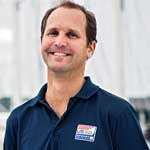 The mission of the US Olympic Sailing Program has two complimentary parts. The first part is a focus on performance sailing at the team level, and the second part is committing to a long-term plan to develop athletes into the future. We set that mission in 2012 and haven’t wavered from it.
The mission of the US Olympic Sailing Program has two complimentary parts. The first part is a focus on performance sailing at the team level, and the second part is committing to a long-term plan to develop athletes into the future. We set that mission in 2012 and haven’t wavered from it.
A prominent aspect of this mission is our team’s attention to high quality coaching with the best possible expertise to support the athletes. The coaching team that US Sailing High Performance Director Charlie McKee has put together is a very talented group of individuals who have accomplished a lot in their own sailing and are now giving back to guide this team. That would be one example of our total focus on achieving performance advantages.
At the development level, we launched an all new Olympic Development Program (ODP) in the beginning of 2015 that’s driven by our project pipeline strategy. This is a program that we’re still raising money for but was launched due to tremendous new financial backing from many partners, and has allowed us to orchestrate a much more robust development program that exposes young sailors between the ages of 15 and 19 to high level coaching. We’re organizing and running Olympic Development Program camps, we’re organizing Youth Travel Teams to the World Championship of some of the Olympic development boats and doing more than ever before for the Youth Worlds Team.
Had it been an issue before that young people ready to make an Olympic commitment weren’t as prepared as they needed to be at that point?
Yes, and this is really the central point of the project pipeline strategy, which is to raise high performance sailing standards in young sailors. We have to better prepare talented young Americans for that transition to Olympic boats.
This came about as we studied all the best teams in the world that we admire. We then looked at what we had been doing with development, and we set out to solve this problem. Up until now, when sailors decided to go into Olympic boats, they haven’t really been fully prepared, and their level of high performance standards haven’t been the same as sailors worldwide in the leading countries.
So that’s what we’re setting out to do. With this program, when the 18-year-old, 19-year-old, 20-year-old makes the transition from Olympic development boats like the 29er, Laser Radial or International 420 into Olympic equipment, they will be better prepared.
You mention an improved coaching program, but isn’t it really about young people getting into the type of boats that have some similarity to the Olympic events?
Yes. First and foremost, you have got to sail the right equipment, and the fairly large group of 230 plus sailors who are participating in the ODP this year, they are all sailing the right equipment. And we see those fleets growing. What’s important is to sail on the right equipment, to learn sail trim and tuning concepts, and to compete at a really high level in an international competition, all the while getting high level coaching.
USA saw some recent success at the International 420 Worlds and the 29er Worlds and at the Youth Sailing Worlds.
There were strong results from the sailors this year, and they deserve a lot of credit because they themselves have been working really hard with their own coaches in addition to working with the ODP. Christopher Williford and Wade Waddell won a bronze at the 29er Worlds. Nic Baird won bronze at the Laser Radial Youth Worlds. Wiley Rogers and Jack Parkin won the 420 Europeans with Will Logue and Bram Brakman finishing second, and then Logue and Brakman went on sail an impressive series at the Youth Sailing World Championship to win the 420 division.
Your program will be graded after the 2016 Rio Games. What will be some of the measurables?
Our ultimate mission as a national sailing team is always clear. We’re judged by performance. So the first measure will be how we perform in Rio. However, other important measures will include how well the US Sailing Team Sperry is set up to shift into the 2020 Tokyo quad, as that’s really important to us.
We have many sailors who are on a longer track where Rio is not the end for them, and their focus extends beyond this summer. So an important measure is how prepared they are to hit the ground running toward the Tokyo Games. And then, a third and very important measure is the strength of our Olympic Development Program, which after just one year, we are feeling good about.
The US team did not medal at the 2012 Olympic Games. Where are you now?
Our team is loaded with talented sailors, but some are on longer timelines than others. Many of the sailors on the US Sailing Team Sperry need more time in the Olympic equipment. Improving depth is a crucial ingredient to our long-term success. Right now, we’ve shown competitiveness in five Olympic classes, and we’d like to see that expand in the next quad.
There was an era when you could graduate from college and then roll into an Olympic program. Is that era gone?
For the most part, those days are long gone where you can come out of college and then make the decision to get into Olympic sailing. Having said that, there is still room for the late bloomer, and the greatest modern example of that is Anna Tunnicliffe. She could be considered a late bloomer in this sport, and she’s our most recent gold medalist, winning the Laser Radial at the 2008 Games.
What have been some of the challenges you’ve had to overcome to get to where the program is now?
First and foremost, our biggest challenge is funding. When you measure the US Olympic Sailing Program, we’re really a mid-size team, a mid-size program. We don’t have government funding. We rely solely on the generosity of an incredible group of donors, a very committed group of sponsors, and USOC performance funding which is also private funding. So that’s our biggest challenge. Right now, we’re managing our biggest budget ever while recognizing it’s still not enough to do the job that we want to do.
But funding has improved over previous quads.
Yes, absolutely. After three and a half years into this role of managing director of the US Olympic Sailing Program, I would say one of the biggest encouraging aspects of this program that motivates me every day is the generosity of our supporters. We have an awesome group of donors and sponsors.
Improved funding is a measure of people paying attention to the sailing program, but is there still an awareness problems that has to be overcome?
We see more awareness the closer we get to the Games. We feel like more of the US sailing community is tuning in to US Sailing Team Sperry performance, tuning into all the key narratives of the Rio 2016 quad. Of course, we would love a bigger and bigger audience, and we spend quite a bit of time growing our audience, but we’re also realistic that the Olympic sailing is not everyone’s cup of tea. That’s one of the great things about our sport is that you can pick your aspect and love it, and it could be quite different from another aspect of the sport. However, there are a lot of American sailors out there, and we want them all rooting for the red, white, and blue.
The USA has qualified in all Olympic and Paralympic events, and the program is now in the midst of its athlete selection process. What was the thinking when laying out that plan?
The first priority was to choose two very competitive international events, so that you have enough data points, enough races to determine the best athletes. I would say the second priority is to make sure that we don’t distract the athletes from Rio training. The end game is Rio. That is where our focus is, and it’s been really important to make sure that athletes, coaches, and staff are all focused on Rio. For the athletes, qualifying is certainly an important step, but ultimately they’re training for the Olympic Games in Rio.
When do you anticipate the team being announced?
Through our selection process, we then nominate the winning athletes to the US Olympic Committee, which then must approve them as members of Team USA. The way it’s going to happen over the next few months, starting in the middle of February, people following the US Sailing Team Sperry effort are going to see members of the Olympic and Paralympic team announced periodically. It will be done in phases. The full Olympic team will be known by the middle of April, and then the full Paralympic team will be known by the end of May.
How can US fans help the team?
As we enter the year of the 2016 Games, we see interest increase for the US Sailing Team Sperry. We are eager to harness that interest, and allow supporters to really get behind this team’s effort and desire. That is why we have launched the It’s Up To Us campaign. The fact is these are young, talented sailors that are totally dedicated to excelling at the Rio Games, but it’s up to us to get them across the finish line. We need supporters of all kinds to get behind the red, white, and blue.
Note: While the US Olympic team did not medal at the 2012 Games, the Paralympic team did. In the Two Person Keelboat event (SKUD 18), Jean-Paul Creignou and Jennifer French won the silver medal. For that accomplishment, Jennifer was named the 2012 Rolex US Yachtswoman of the Year.


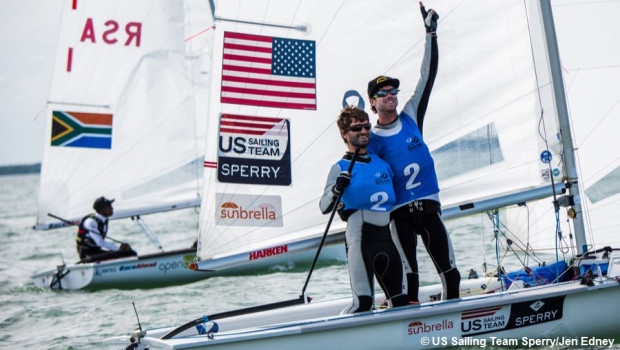


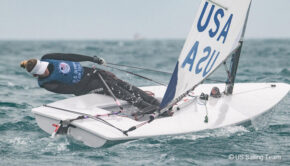
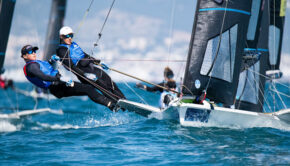
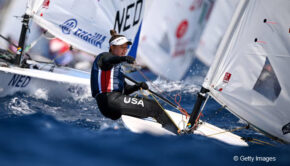
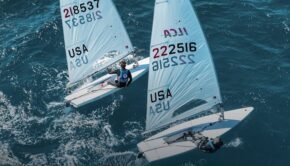
 We’ll keep your information safe.
We’ll keep your information safe.